
Migrating to Galapagos
Birds migrating to the Galapagos Islands will travel up to 16,000 miles to reach their overwintering destination...
Approximately 29 species of bird are known to migrate to the Galapagos Islands annually. These birds visit Galapagos to escape the harsh winters of their breeding habitats in the northern hemisphere. Most of the migrant species are native to a sub-arctic habitat, particularly along the coastlines of North America and some northern European countries.
Some species use Galapagos as a stop off point to refuel upon their route, others make Galapagos a destination for a couple of months before making the journey back to the northern hemisphere. Here’s a few examples of some of the migratory birds you are likely to encounter in Galapagos:
Red-necked Phalarope
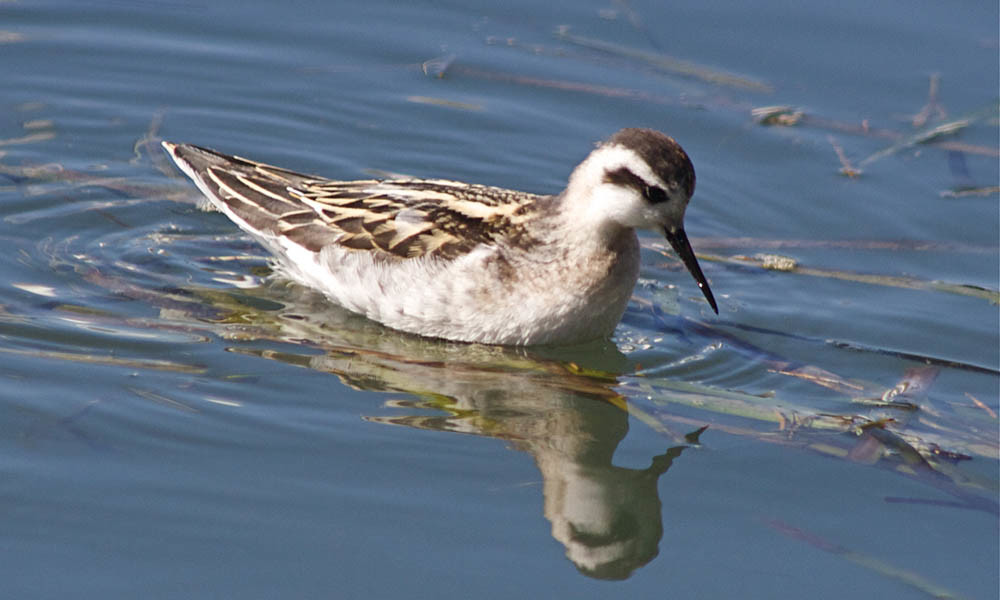
Red-necked phalarope with winter plumage
The red-necked phalarope (Lobipes lobatus) surely has the longest migration; they travel up to an incredible 16,000 miles from their summer breeding grounds in the arctic regions of North America and Europe migrating to Galapagos to avoid the winter chill. This shore bird measures 18cm in length and is grey and brown with a chestnut neck and upper breast and a white stripe along the wing. Almost all of the wintering season is spent in open water, and the red-necked phalarope is often seen spinning the water into a vortex to release plankton to feed on. As this species rarely comes into contact with humans, it can be unusually tame.
Semipalmated Plover
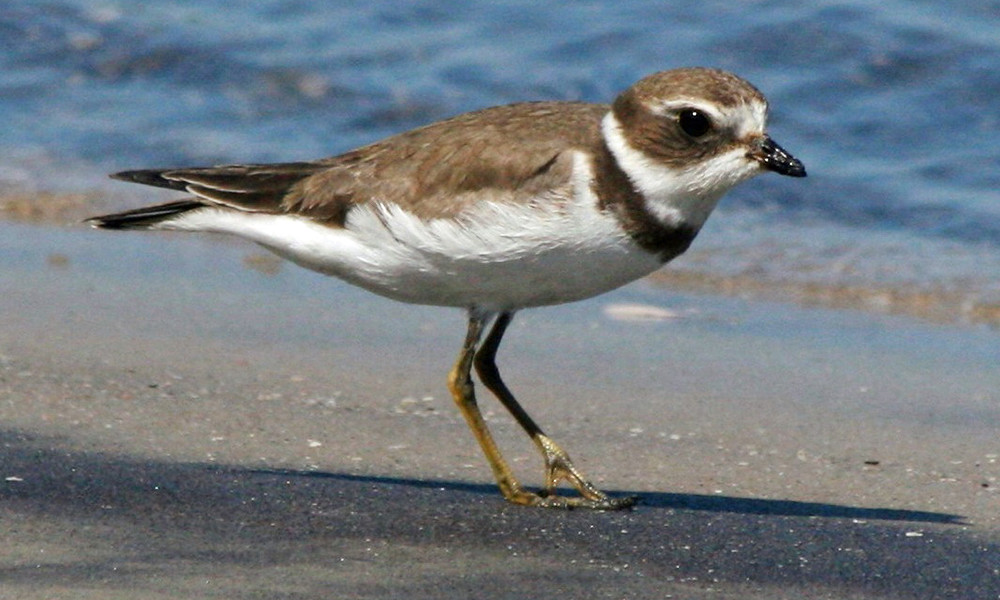
Semipalmated plover
The Semipalmated plover (Charadrius semipalmatus) spends most of the year in Northern Europe, however, they winter in coastal areas of the southern United States, the Caribbean and much of South America. They are often seen as far south as the Galapagos between August and April. Adults have a grey-brown back and wings, a white belly, and a white breast with one black neckband. Their breeding habitat is open ground on beaches or flats across northern Canada and Alaska. They nest on the ground in an open area with little or no plant growth.
Ruddy Turnstone
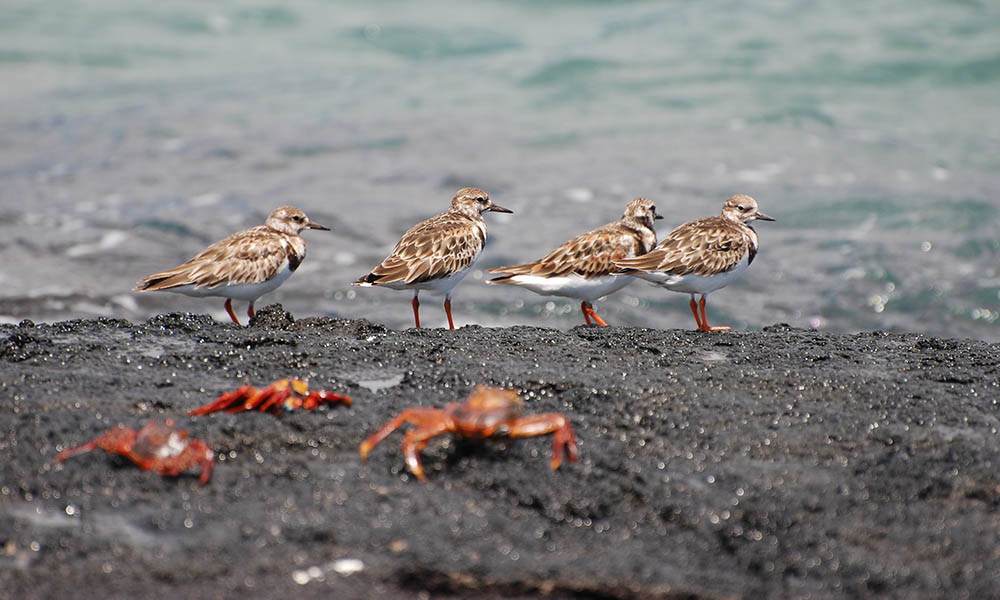
Ruddy turnstones in Galapagos © Martin Partridge
The ruddy turnstone (Arenaria interpres) is a brown and russet coloured shore bird which lives along coastlines and spends the majority of its day foraging in the wet sand. It is a fairly small bird with a wingspan of 50–57cm and a weight of 85–150g. The ruddy turnstone breeds in northern latitudes: western Alaska, Ellesmere Island, Greenland, Norway, Denmark, Sweden, Finland, Estonia and northern Russia, usually no more than a few kilometres from the sea. Breeding birds have reddish-brown upper parts with black markings. The head is mainly white with black streaks on the crown and a black pattern on the face. The breast is mainly black apart from a white patch on the sides. It is a highly migratory bird flying south to winter on coastlines almost worldwide.
Sanderling
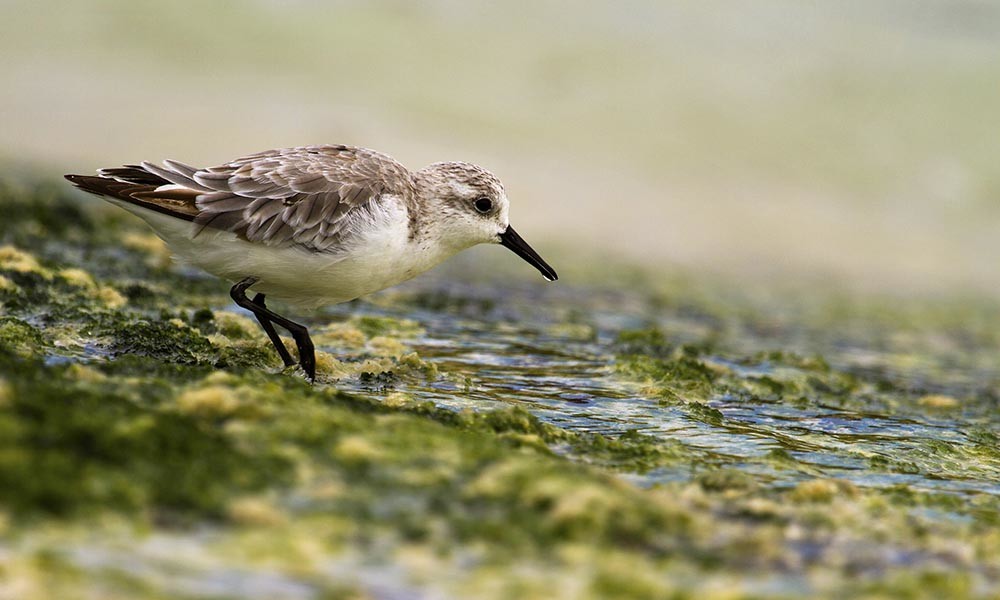
Sanderling in Galapagos © Rick Du Boisson
The sanderling (Calidris alba) is a circumpolar Arctic breeder, and is a long-distance migrant travelling between 3,000 and 10,000 km every winter to the coasts of North and South America, South Europe, Africa, and Australia, often finding shelter in along the way in Galapagos before heading north once more in August. Sanderlings breed on the high Arctic tundra and migrate south for the winter to become one of the most common birds along beaches in North America. They gather to probe the sand of wave-washed sandy beaches and mud flats searching for marine invertebrates, particularly the mole crab, buried in the upper intertidal zone.
Wandering Tattler
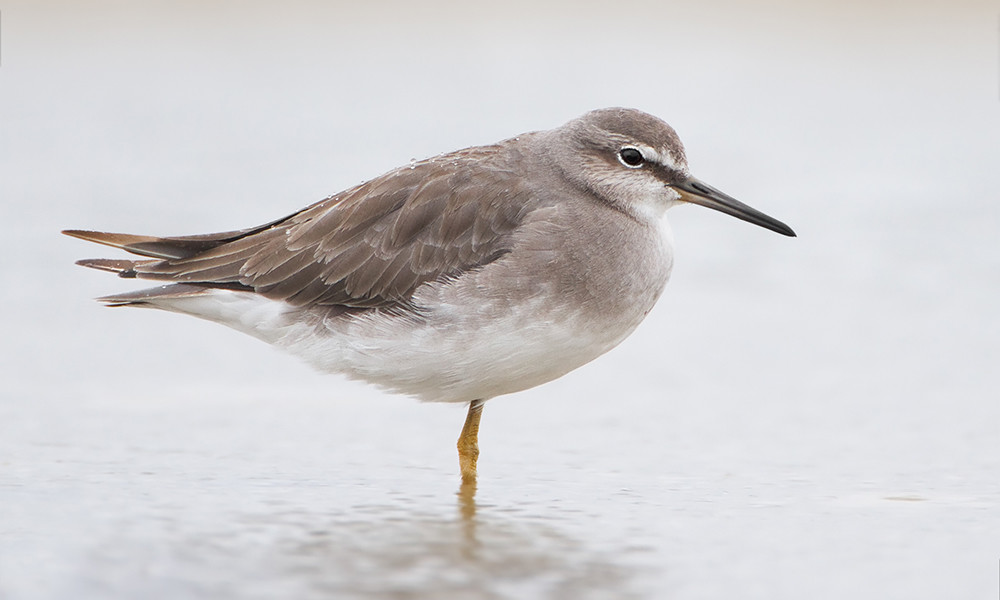
Wandering tattler with winter plumage
The wandering tattler (Heteroscelus incanus) spends the summer in breeding grounds in far-eastern Russia, Alaska, portions of the California coast and the Canadian part of the Arctic Circle where they nest in rocky areas along mountain streams. During the rest of the year, they migrate south and are found on rocky islands in the southwest Pacific and on rocky Pacific coasts from California to Galapagos in South America. The wandering tattler is a medium-sized wading bird, unique in colouration with plain greyish wings and back and a scaly breast pattern. They feed on aquatic invertebrates such as crustaceans and marine worms and during breeding season, they also eat insects. While wading, they forage actively, making jerky bobbing movements.
Whimbrel
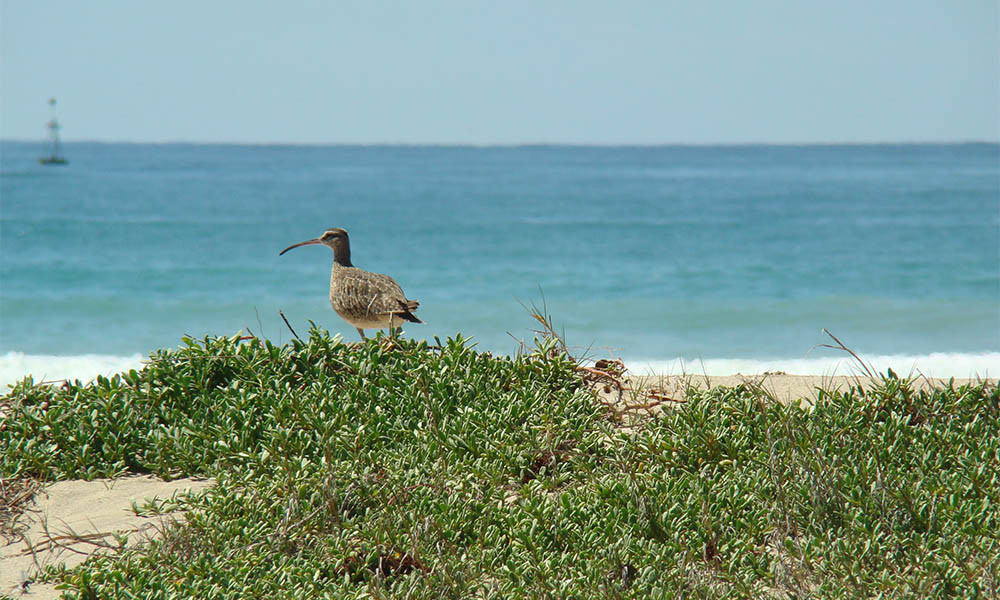
Whimbrel in Galapagos © GCT library
The whimbrel (Numenius phaeopus) is native to and often found breeding in Scotland and around the British Isles. It is also a migratory species spending the winter and overwinters on the coasts in Africa, South America, South Asia and southern North America and can be regularly spotted in Galapagos. The whimbrel feeds by probing soft mud for small invertebrates and by picking small crabs and similar prey off the surface. Adults are very defensive of nesting area and will even attack humans who come too close. Near the end of the 19th century, hunting on their migration routes took a heavy toll on this bird’s numbers, but the population has since recovered.

